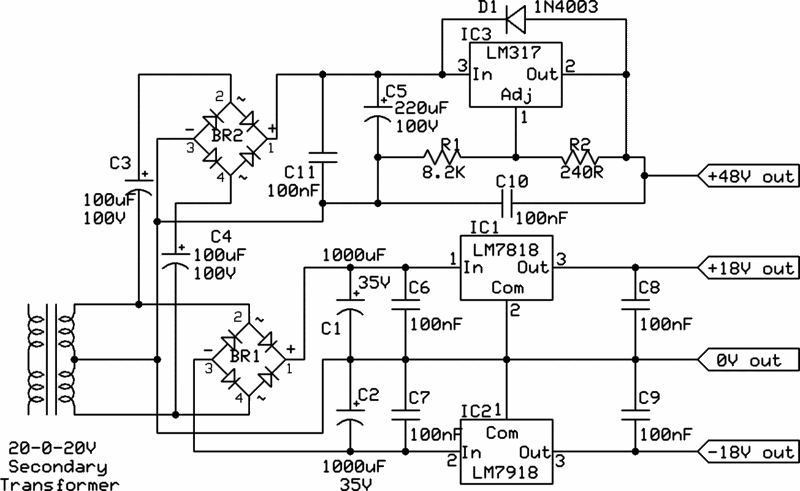Deepdark
Well-known member
Hi
I'm drawing a positive, negative and 48V power supply. I plan using a LM317HV for the 48V rail. other rails are +15V and -15V and a 18V dual coil toroidal, readily available everywhere. But, how to manage the 48V rail? Looking at the exemple below, we have a 20V-0-20V transformer (with the Toroidal, we just strap the lead we would use for a serie connection, and send it to the ground. So we effectively have 20V each side. Each side will passed through the rectifier, each their turn. So once rectified, we got, in the exemple below, 20v x 1.414 = 29v. Far enought for the 15v rail, but not enought for the 48v rail. I just don't understand the doubgler circuit below. Thanks

I'm drawing a positive, negative and 48V power supply. I plan using a LM317HV for the 48V rail. other rails are +15V and -15V and a 18V dual coil toroidal, readily available everywhere. But, how to manage the 48V rail? Looking at the exemple below, we have a 20V-0-20V transformer (with the Toroidal, we just strap the lead we would use for a serie connection, and send it to the ground. So we effectively have 20V each side. Each side will passed through the rectifier, each their turn. So once rectified, we got, in the exemple below, 20v x 1.414 = 29v. Far enought for the 15v rail, but not enought for the 48v rail. I just don't understand the doubgler circuit below. Thanks



